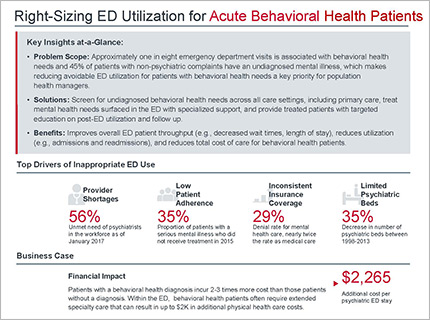Auto logout in seconds.
Continue LogoutMatthew Wetschler, an emergency physician, survived a near-fatal surfing accident and made a "miraculous recovery," Christina Farr reports for CNBC. But months later, he's still getting calls from debt collectors for $27,000 in care he thought his insurance would cover. Here's what happened.
Sept. 18 webconference: Learn the latest best practices in denials strategy
The accident
While surfing near his home in Northern California last November, Wetschler struck his head on a shallow sand bar. He broke his neck, and his heart stopped for 10 minutes, Farr reports.
Fortunately for Wetschler, a nearby nurse found him, and an ambulance took him to the hospital. He survived.
Even so, he had a spinal cord injury that had the potential to leave him unable to move his arms and legs. Neurosurgeons fused metal rods into his vertebrae, while directing blood flow to his spinal cord.
After the surgery, Wetschler committed himself to physical and occupational therapy, relearning how to walk. "His recovery ... astounded his care team," writes Farr, who notes that she is a personal friend of Wetschler.
But as Wetschler recovered from his accident, he was surprised to learn that his medical bills would be either denied outright or covered only partially—an outcome that demonstrates that even an insurance plan's "out of pocket maximum" may not truly represent the limit of a patient's exposure.
According to Wetschler, the cost of his care exceeded $450,000. Of that, he owes $27,000, which he described as "a devastating amount to the individual."
Why such an expensive bill?
So why was Wetschler not more fully protected from the cost of his care? A major factor was that the hospital where he was treated—to which he'd been transported while he was unconscious—was outside of his insurer's network.
In California, where Wetschler lives, balance billing—in which patients are held financially responsible for non-covered services—is technically banned in emergency situations, according to Larry Levitt, of the Kaiser Family Foundation. But Farr reports, "There's some grey area about what counts as [an] 'emergency.'" For example, had Wetschler been conscious before he received spine surgery, his insurer could claim at that time he should have been transferred to an in-network facility.
Further, while Wetschler had received prior approval for his rehabilitation, it later came to light that the center was out of network as well.
9 best practices for sharing prices with patients
Wetschler said he repeatedly contacted to his insurer, Oscar Health, to explain the circumstances: His care was emergent, and the rehabilitation had been pre-approved.
"I would call, remind Oscar of pre-approval or emergent care, Oscar would be given numbers to contact the facilities to independently confirm and assure me things would be cleared up," Wetschler said. Yet despite his repeated calls, the situation "still hasn't resolved," Wetschler said.
"I'm a doctor with a master's degree in health policy, and this happened to me," he added. "What is it like for everyone else?"
The laws in place—and their limits
Wetschler's case is one example of many that showcase "loopholes" in consumer protections for emergent medical care. In recent weeks, the case of Drew Calver—a teacher who faced more than $100,000 in bills for care for a heart attack—has gained attention as well. Like Wetschler, Calver received emergency care at an out-of-network facility.
Through a financial assistance program at the hospital that treated Calver, his bill was reduced to $782. The hospital further reduced the bill to $332, and Calver paid it. However, he said he remains shaken by the experience.
Separately, Carol Lucas, a Los Angeles-based attorney with experience in health care payment disputes, said Calver's case "illustrates the dangers that even insured people face," especially because Calver was unconscious at the time he was treated and so could not ensure that he arrived at an in-network facility (Farr, CNBC, 8/26; Rosenberg, "To Your Health," Washington Post, 8/28; Terhune, Kaiser Health News, 8/31).
Join our most popular webconference series: Health Insurance 101
Back by popular demand: This webconference series includes four 30-minute online sessions which will cover the fundamental aspects of health insurance structure and delivery, updated to review the latest trends in the industry.
Don't miss out on the latest Advisory Board insights
Create your free account to access 1 resource, including the latest research and webinars.
Want access without creating an account?
You have 1 free members-only resource remaining this month.
1 free members-only resources remaining
1 free members-only resources remaining
You've reached your limit of free insights
Become a member to access all of Advisory Board's resources, events, and experts
Never miss out on the latest innovative health care content tailored to you.
Benefits include:
You've reached your limit of free insights
Become a member to access all of Advisory Board's resources, events, and experts
Never miss out on the latest innovative health care content tailored to you.
Benefits include:
This content is available through your Curated Research partnership with Advisory Board. Click on ‘view this resource’ to read the full piece
Email ask@advisory.com to learn more
Click on ‘Become a Member’ to learn about the benefits of a Full-Access partnership with Advisory Board
Never miss out on the latest innovative health care content tailored to you.
Benefits Include:
This is for members only. Learn more.
Click on ‘Become a Member’ to learn about the benefits of a Full-Access partnership with Advisory Board
Never miss out on the latest innovative health care content tailored to you.

